There is a variety of beautiful flowers name starting with G. One of the most popular is the Gerbera Daisy, which comes in a range of bright colors such as pink, red, yellow, and orange.
The Gladiolus is another stunning flower that comes in a variety of colors such as pink, red, purple, and white. The Gazania flower is a bright yellow and orange daisy-like flower that blooms in the summer. The Globe Amaranth is another popular flower starting with “G” that comes in a range of colors such as purple, pink, and white.
The Goldenrod flower is a bright yellow wildflower that is commonly found along roadsides and fields. Finally, the Gardenia flower is a fragrant white flower commonly used in wedding bouquets and other floral arrangements. Overall, there are a variety of beautiful flowers starting with “G” to choose from.
Flowers Name Starting with G
Gardenia
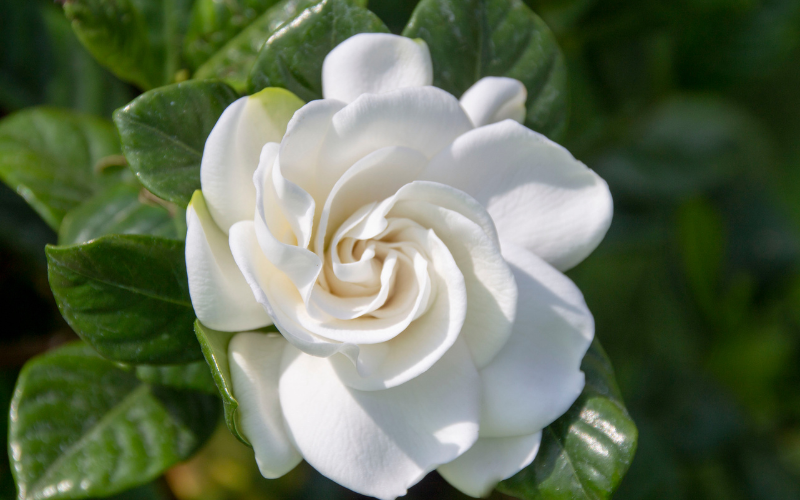
Gardenia flowers are known for their amazing beauty and sweet fragrance. These flowers are native to Asia, Africa, and Oceania. They have large, waxy, white, or yellowish petals that give them a classic and elegant look. They require a lot of care and attention, including pruning, and proper watering in order to thrive.
In traditional Chinese culture, they are believed to be a symbol of love and purity, making them a popular gift during weddings and other special occasions. With proper care, the gardenia flower will bloom and fill your garden with its beautiful scent and vibrant white petals.
| Scientific Name | Gardenia jasminoides |
| Native Range | China, Taiwan, Japan, and Vietnam |
| Flowering Season | Late spring to summer |
Gas Plant
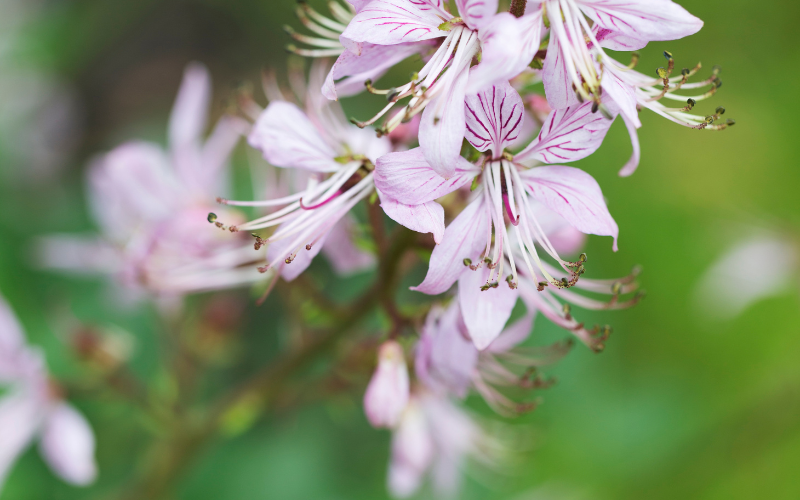
The Gas Plant (Dictamnus albus) is a beautiful flowering plant. That is native to Europe and Asia. It is popular for both its beauty and unique characteristics. The plant produces stunning flowers that are pink, lavender, or white in color and give off a pleasant fragrance.
Gas Plant is a low-maintenance plant and tends to grow well in warm and dry conditions. It is also said to have a calming effect on the mind and body, making it a popular choice for gardeners who want to create a relaxing and peaceful outdoor space. The Gas Plant flower blooms in the summer months, displaying stunning pink, white, and purple flowers that are both fragrant and long-lasting.
| Scientific Name | Dictamnus albus |
| Native Range | Germany, France, Spain, Italy, Russia, China, and Japan |
| Flowering Season | Late spring to early summer |
Gayfeather
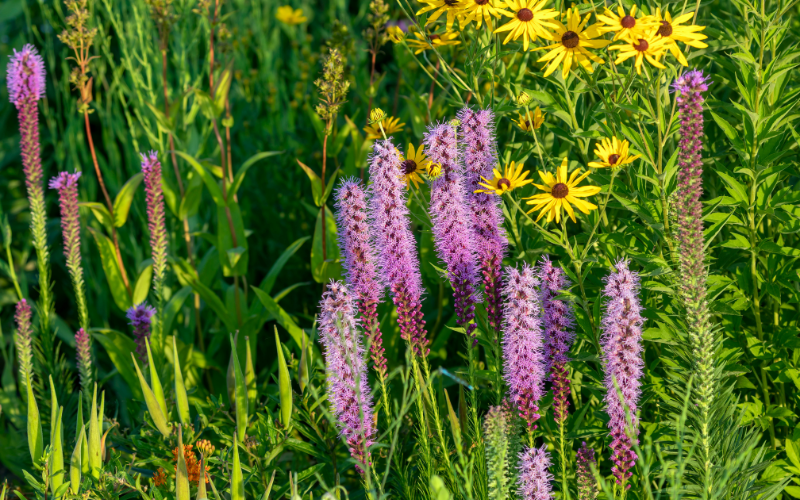
The Gayfeather flower is a beautiful plant native to North America. These striking flowers attract butterflies making them a popular choice for gardeners who want to provide a habitat for pollinators.
Gayfeather flowers typically bloom in mid to late summer, adding a splash of color to gardens that may have already peaked earlier in the season. The Gayfeather flower has also been used for medicinal purposes. Furthermore, it is a symbol of strength, courage, and perseverance, making it an ideal gift for someone going through a tough time.
| Scientific Name | Liatris spicata |
| Native Range | North America |
| Flowering Season | Summer |
Gazania
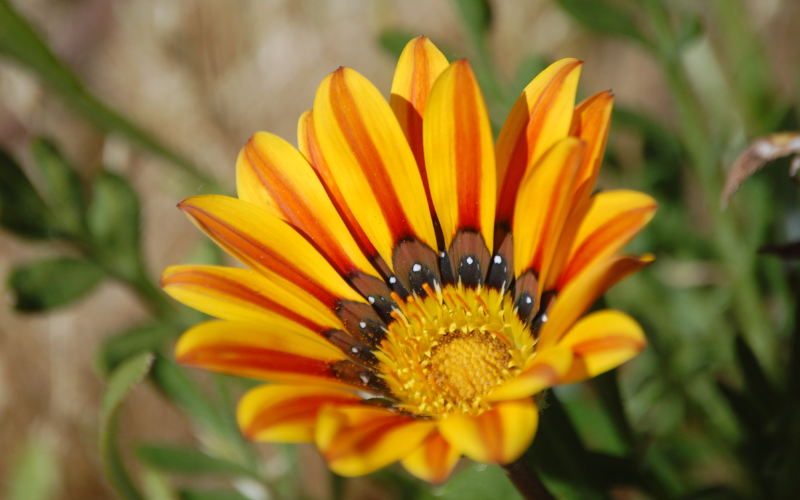
The Gazania flower is a stunning and unique addition to any garden or landscape. With its bright and vibrant petals that range in color from yellow to orange to red, the Gazania is the perfect flower to add a pop of color to your outdoor space.
These flowers are also very low maintenance and making them ideal for busy gardeners or those who live in hot and dry climates. These flowers prefer full sun and well-drained soil, so be sure to plant them in a sunny location with soil that drains well.
| Scientific Name | Gazania |
| Native Range | Southern Africa |
| Flowering Season | Spring to fall |
Gerbera
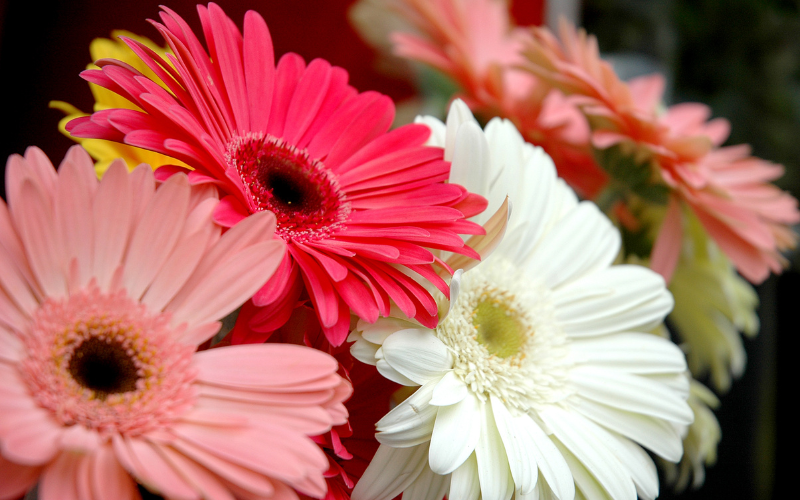
Gerbera, also known as the African Daisy, is a genus of ornamental plants that is native to South America, Africa, and Asia. They come in a variety of brilliant colors such as pink, yellow, orange, and red.
They are also a popular choice for gardens due to their ability to attract bees and butterflies. Gerberas are known to symbolize purity, innocence, and beauty, making them an ideal gift for a loved one.
| Scientific Name | Gerbera jamesonii |
| Native Range | Southern Africa |
| Flowering Season | Spring to fall |
Geum
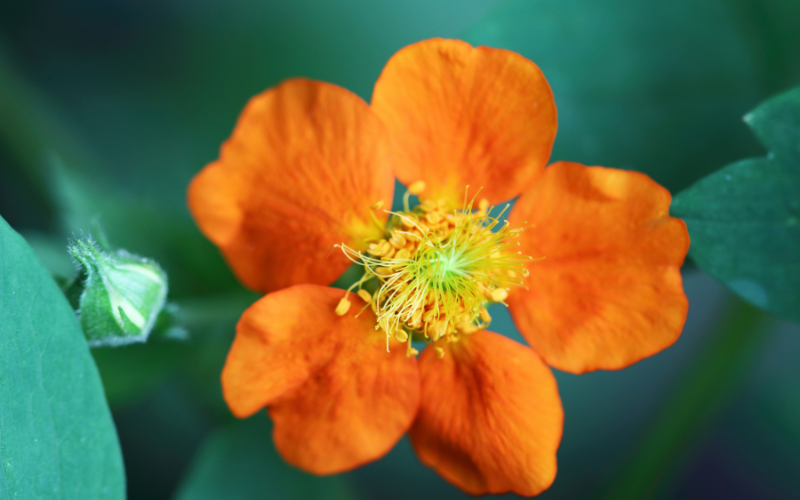
The Geum flower is a beautiful perennial plant that belongs to the rose family. It is native to Asia, Europe, and North America. The Geum flower is known for its bright, stunning colors such as yellow, orange, and red that are sure to brighten up any garden.
One of the most unique features of this flower is that it produces a large number of blooms, which makes it stand out from other flowers. The Geum flower prefers a sunny location with well-draining soil, and it does well in rock gardens, borders, and containers. These flowers bloom in early summer and can last all the way through to early fall.
| Scientific Name | Geum |
| Native Range | Worldwide |
| Flowering Season | Spring to fall |
Gilliflower
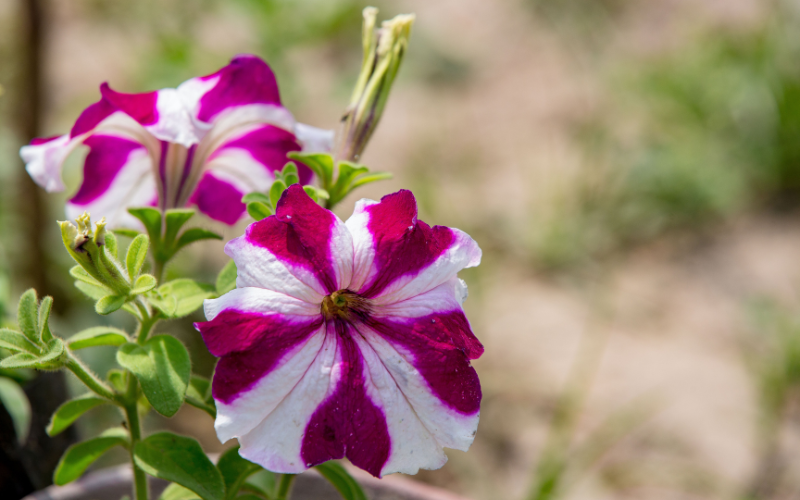
Gilliflower is a beautiful and popular flower that comes in a variety of colors including pink, red, white, yellow, and purple. The flower’s name is derived from the French word “clou” which means nail, referring to the flower’s strong, nail-like scent.
Gilliflowers flower primarily in the spring and summer months, but with the right care, they can bloom year-round. They are relatively easy to grow and can tolerate both sun and shade.
| Scientific Name | Dianthus |
| Native Range | Southern Europe, North Africa, and the Middle East |
| Flowering Season | Spring and summer |
Globe Amaranth

The Globe Amaranth flower is a beautiful and unique flower that is native to South and Central America. The flower comes in shades of pink, purple, red, and white and has a unique, almost papery texture.
It is easy to grow and can thrive in both pots and garden beds. Globe Amaranth flowers are known for their long-lasting blooms, making them a popular choice for cut flower arrangements.
| Scientific Name | Gomphrena globosa |
| Native Range | Central America |
| Flowering Season | Summer to fall |
Globeflower
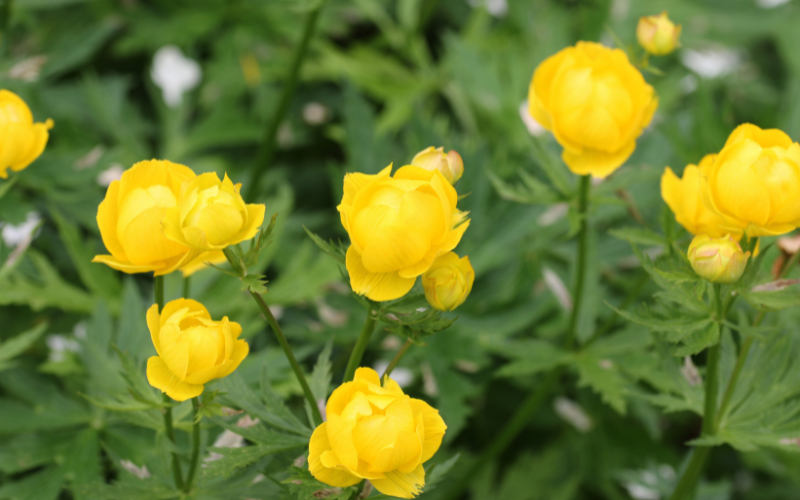
Globeflower is a beautiful flower that is known for its vibrant colors and unique shape. It is a perennial flower that is native to Europe, Asia, and North America.
This flower can be found in a variety of colors, including yellow, orange, red, and even pink. Its petals are soft and velvety, which gives it a delicate appearance. The globeflower is not just a beautiful flower, but it also has medicinal properties.
| Scientific Name | Trollius |
| Native Range | Europe and Asia, including countries like Norway, Sweden, Finland, Russia, Mongolia, and China |
| Flowering Season | Late spring or early summer |
Godetia
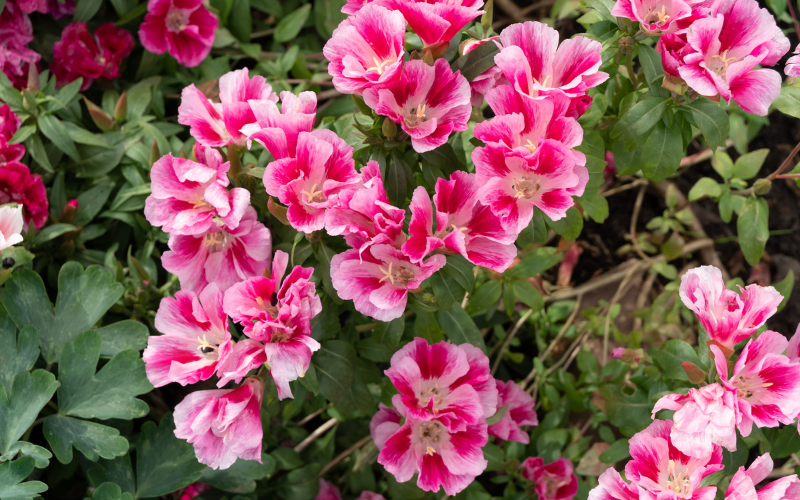
Godetia flower is a beautiful wildflower that blooms in a wide range of colors, including pink, red, purple, and white. The godetia flower is native to California.
The godetia flower is easy to grow and care for, making it a popular choice for beginner gardeners. The godetia flower is also a great option for attracting bees and butterflies to your garden, making it a great choice for eco-conscious gardeners. The godetia flower is a beautiful and versatile addition to any garden or landscape.
| Scientific Name | Clarkia amoena |
| Native Range | North America |
| Flowering Season | Spring to summer |
Gaillardia

Gaillardia is a beautiful flowering plant belonging to the Asteraceae family. It is native to North and South America. It is commonly known as Blanket Flower or Indian Blanket.
The flowers of Gaillardia are typically large and showy, with bright colors that range from shades of yellow and orange to red and burgundy. They have a long flowering period, typically from late spring or early summer through fall. It is a low-maintenance and visually appealing plant.
| Scientific Name | Gaillardia |
| Native Range | North America, South America |
| Flowering Season | Summer to fall |
Garden Nasturtium
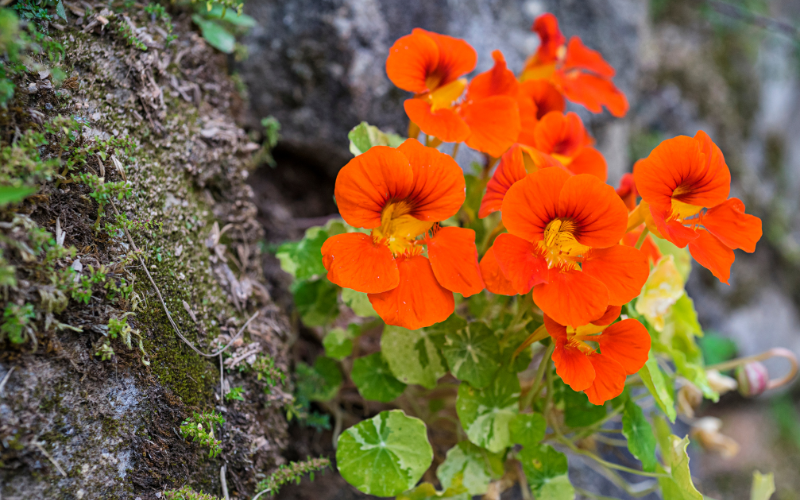
Garden Nasturtium is a beautiful flower. It is scientifically known as Tropaeolum majus. Garden Nasturtium is a trailing or climbing plant that can reach a height of 1 to 3 feet (30 to 90 cm).
They come in a range of vibrant colors, including shades of orange, yellow, red, and sometimes cream or variegated combinations. Garden Nasturtium flowers attract bees and butterflies, with their bright colors and nectar-rich blooms. Garden Nasturtium is relatively easy to grow, making it popular among gardeners.
| Scientific Name | Tropaeolum majus |
| Native Range | South America |
| Flowering Season | Summer to fall |
Gaura
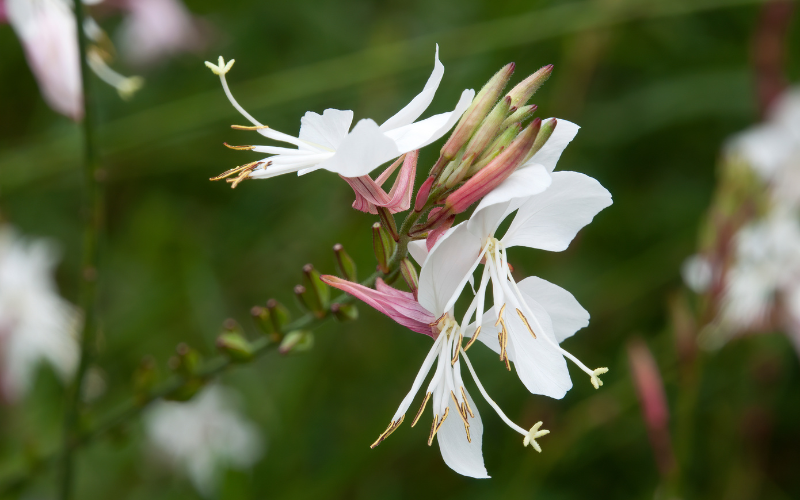
Gaura is a beautiful flower. It is scientifically known as Gaura Lindheimeri. It is native to North America. It typically grows to a height of 2 to 4 feet (60 to 120 cm) and spreads about 2 to 3 feet (60 to 90 cm) in width.
The Gaura flower comes in a variety of colors, including white, pink, and bi-color combinations. Gaura attracts various bees, butterflies, and hummingbirds. Gaura is generally easy to grow and low-maintenance. It prefers full sun to partial shade and well-drained soil.
| Scientific Name | Gaura lindheimeri |
| Native Range | Southern United States |
| Flowering Season | Summer to fall |
Gentian Sage
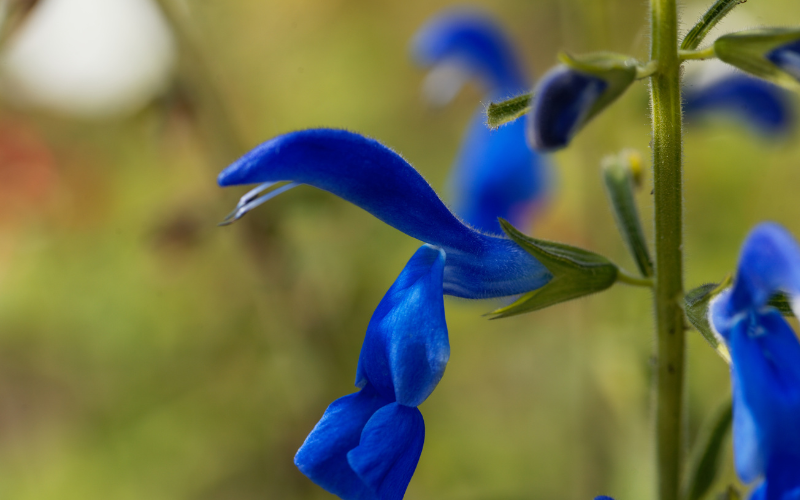
The Gentian Sage flower is a stunningly beautiful plant, native to Mexico and Guatemala. It is scientifically known as Salvia patens. Its scientific name is Salvia Patens, Gentian Sage.
It typically grows in reaching a height of about 2 to 3 feet (60 to 90 cm). Gentian Sage are attracting bees, butterflies, and hummingbirds. It prefers well-drained soil that is rich in organic matter.
| Scientific Name | Salvia patens |
| Native Range | Central Mexico |
| Flowering Season | Summer to fall |
Geranium
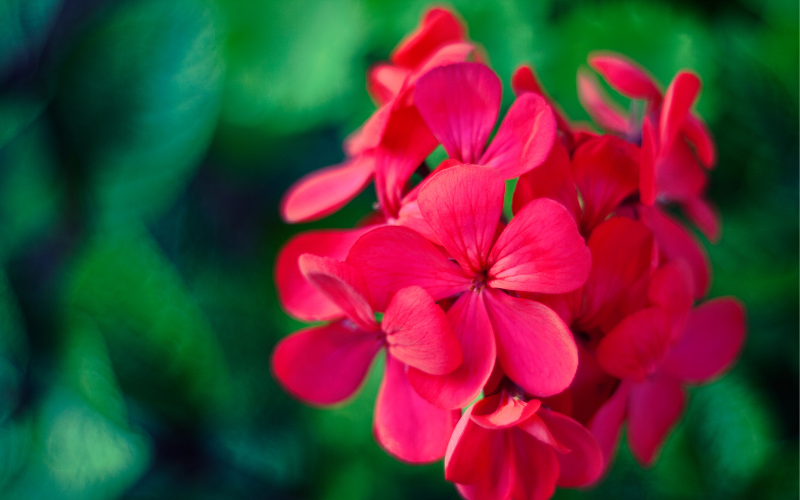
Geranium is a beautiful flower. Geranium flowers are typically five-petaled and come in a variety of colors, including shades of pink, purple, white, and blue. Geraniums generally have a long flowering season, typically starting in late spring or early summer and continuing into fall.
They prefer full sun to partial shade and well-drained soil. : Geraniums are popular choices for borders, flower beds, rock gardens, and containers. Geraniums are relatively easy to care for, making them an excellent choice for gardeners.
| Scientific Name | Geranium |
| Native Range | Worldwide |
| Flowering Season | Spring to summer |
Gerbera Daisy
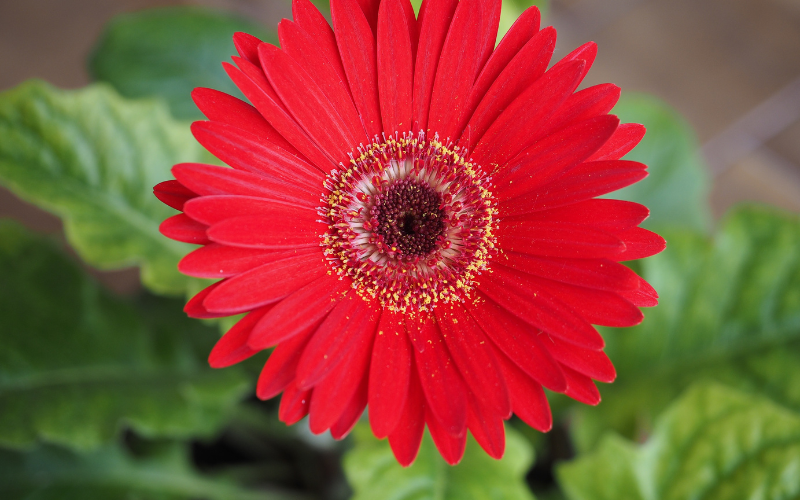
The Gerbera Daisy is one of the most popular flowers in the world. It is scientifically known as Gerbera jamesonii and is a popular flowering plant native to South Africa. The petals come in a wide range of colors, including shades of red, orange, yellow, pink, and white.
It is reaching a height of about 12 to 18 inches (30 to 45 cm) with a spread of about 12 to 24 inches (30 to 60 cm). Gerbera Daisies typically bloom in late spring to early summer and continue flowering through the summer months.
| Scientific Name | Gerbera jamesonii |
| Native Range | Southern Africa |
| Flowering Season | Spring to fall |
Giant Hibiscus
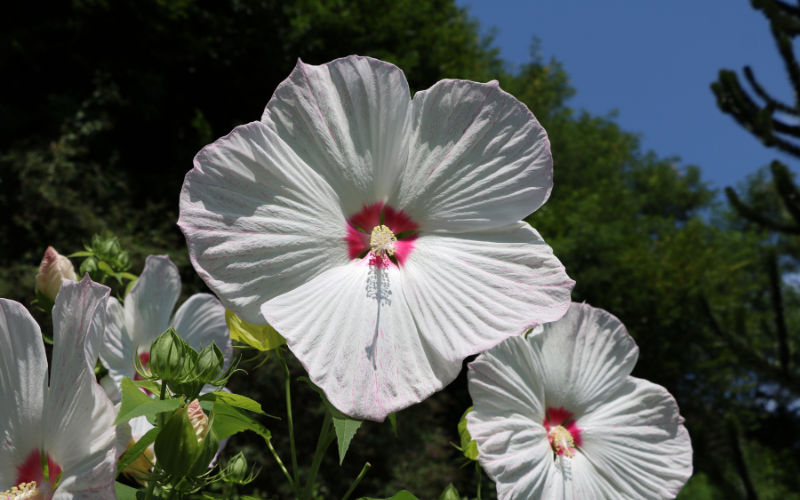
Giant Hibiscus is a beautiful flower. Hibiscus is native to wetlands and marshy areas of eastern North America. The flowers of Giant Hibiscus are large and showy, measuring around 6 to 8 inches (15 to 20 centimeters) in diameter. The petals of the giant hibiscus can come in a wide range of colors, from fiery reds and oranges to delicate pinks and purples. The flowering season of Hibiscus grandiflorus is usually in mid to late summer, typically from July to September.
| Scientific Name | Hibiscus grandiflorus |
| Native Range | Southeastern United States |
| Flowering Season | Spring to summer |
Ginger Lily
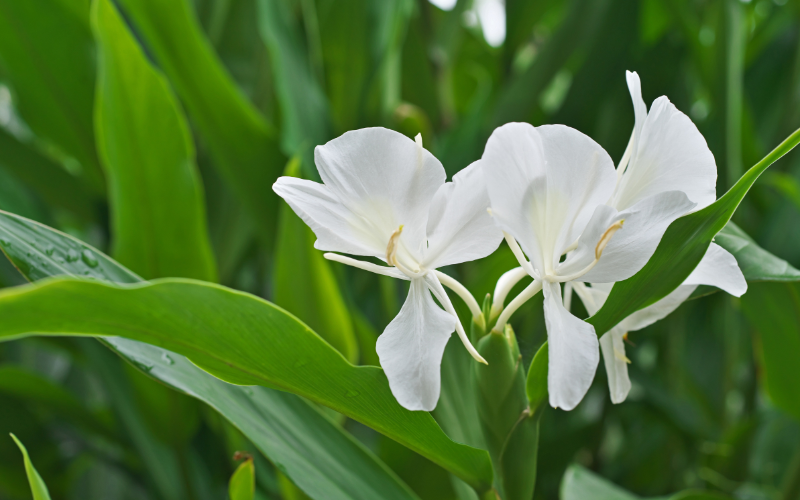
Ginger Lily is a beautiful flower. Ginger Lily flowers are typically large and showy. They have a unique structure with colorful petals and prominent stamens. The flowers can range in color from white, yellow, orange, pink, to red, depending on the species and cultivar.
One of the distinctive features of Ginger Lily flowers is their delightful fragrance. Ginger Lilies generally bloom in the summer. Ginger Lilies prefer growing in full sun to partial shade and well-drained soil.
| Scientific Name | Hedychium |
| Native Range | Asia |
| Flowering Season | Summer to fall |
Gladiolus
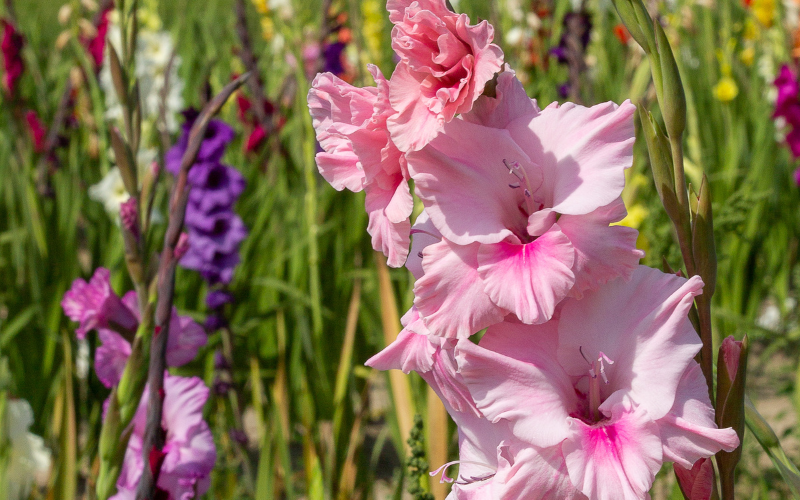
Gladiolus is a beautiful flower. It is a genus of flowering plants in the family Iridaceae. Gladiolus flowers come in a wide range of colors, including shades of red, pink, orange, yellow, white, purple, and bi-color combinations.
Gladiolus flowers vary in size depending on the cultivar, but they are generally large and showy. The individual florets can range from 2 to 5 inches (5 to 12 cm) in diameter. Many Gladiolus varieties are not strongly scented, although some cultivars may have a delicate fragrance.
| Scientific Name | Gladiolus |
| Native Range | Africa, Asia, & Europe |
| Flowering Season | Spring to fall |
Great Camas
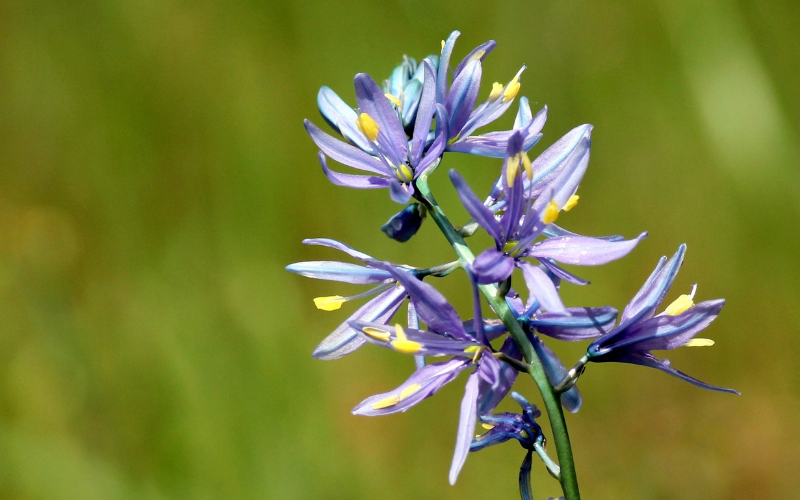
The Great Camas is a beautiful flowering plant. It is scientifically known as Camassia leichtlinii or Camassia quamash, native to western North America. The Great Camas produces tall spikes of flowers that can reach heights of 1 to 3 feet (30 to 90 cm).
The flowers of the Great Camas come in various shades of blue and purple, ranging from pale lavender to deep violet. The Great Camas typically blooms in late spring to early summer.
| Scientific Name | Camassia leichtlinii |
| Native Range | North America |
| Flowering Season | Spring to summer |
Ground Orchid
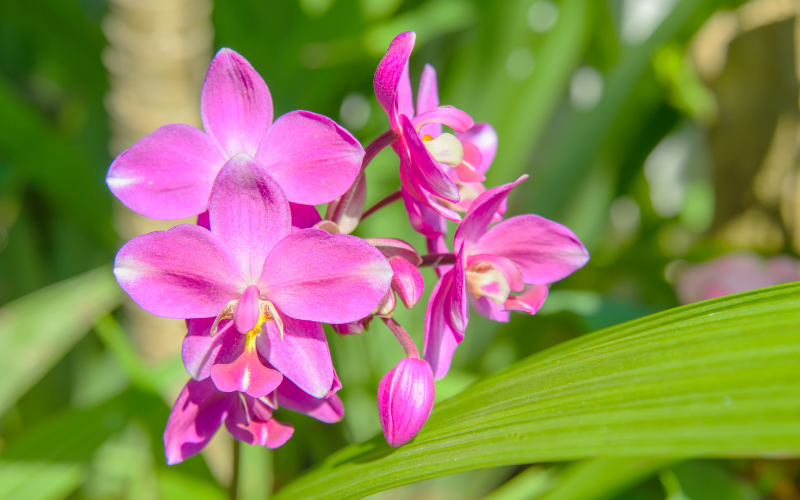
Ground Orchid, or Spathoglottis plicata, is a lovely member of the Orchidaceae family. It is native to Asia & Australia and comes in a range of hues such as pink, purple, white, and yellow. With a bloom period that lasts from late spring to early summer, and thrives in well-draining, organic-rich soil.
It can grow up to 2 feet tall and has been used in traditional medicine for its anti-inflammatory and antifungal effects. Ground Orchids are truly a sight delight with their exciting look and rare growth patterns, giving a touch of class and elegance to nature.
| Scientific Name | Spathoglottis |
| Native Range | Asia & Australia |
| Flowering Season | Spring to summer |
Garden Phlox
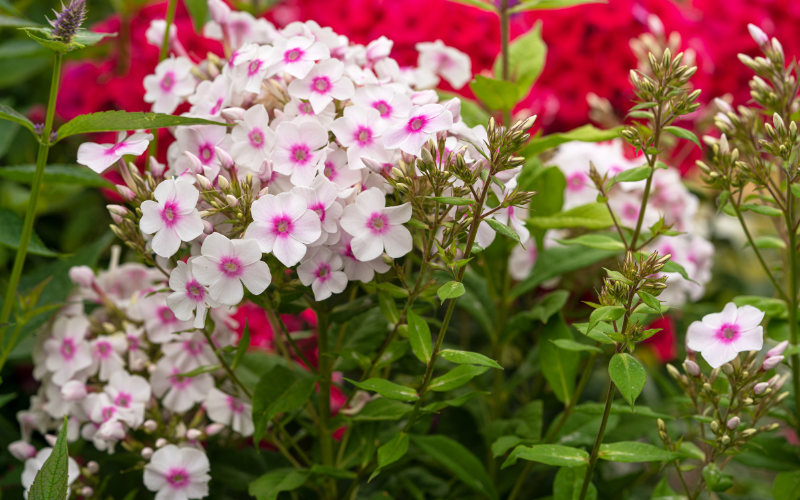
Garden phlox, or Phlox paniculata is a member of the Polemoniaceae family. It is native to North America and is grown for its beautiful and colorful blossoms, which vary from quiet to bright and strong hues.
This flower needs well-drained soil and full sun. It blooms from summer to early autumn and can grow to be 2 to 4 feet tall. Certain species have medical uses, treating coughs and skin problems. Garden Phlox, with its wonderful clusters of delicate, fragrant blooms and ability to attract butterflies and bees, is a lovely addition to any landscape.
| Scientific Name | Phlox paniculata |
| Native Range | United States |
| Flowering Season | Summer to fall |
Gentian Sage

The Lamiaceae family’s Gentian Sage, or Salvia patens, is a beautiful flowering plant. These blooms, native to Mexico and Central America, range in color from bright blue and purple to velvety indigo and violet.
It can grow up to 2-3 feet tall, prefers well-drained soil, full sun or light shade, and blooms from late spring to early autumn. Its leaves have been brewed into teas and used to treat digestive issues and inflammation. With its graceful looks and bright hues, Gentian Sage is indeed a show-stopping addition to any garden or flower arrangement.
| Scientific Name | Salvia patens |
| Native Range | Central Mexico |
| Flowering Season | Summer to fall |
Ginger Lily

The Ginger Lily, or Hedychium, is an exotic flower in the Zingiberaceae family. Native to tropical places, India, Southeast Asia, and the Himalayas, it comes in an array of hues such as white, yellow, orange, and pink. Ginger Lilies grow well in wet, well-drained soil with light shade and bloom in late summer or early autumn.
This is also used for its anti-inflammatory and digestive effects. Ginger Lily has a unique appearance, with long stalks filled with huge, showy, and delicate petals that mimic exotic butterflies, creating an attractive part of any floral collection or garden.
| Scientific Name | Hedychium spp. |
| Native Range | Asia |
| Flowering Season | Summer to fall |
Golden Columbine
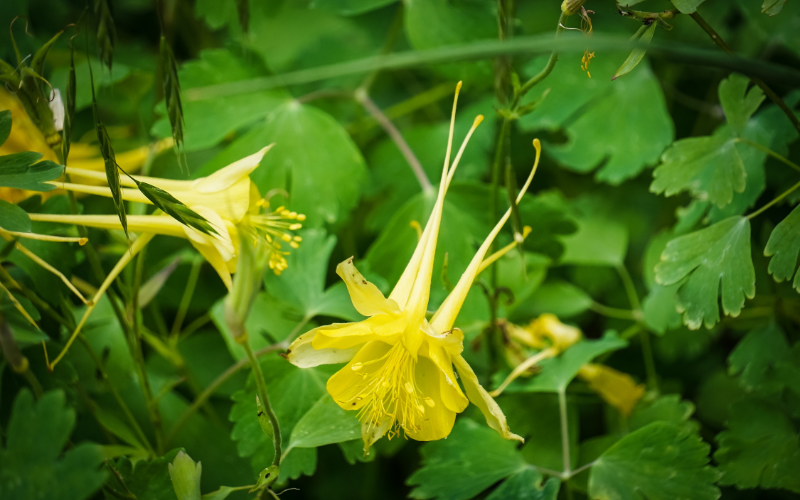
Golden Columbine, or Aquilegia chrysantha, is an attractive Ranunculaceae flower. These are native to North America and come in a variety of colors, including vivid yellow, golden, and even orange hues. They can grow up to 3 feet tall.
It flowers from late spring to early summer in well-drained soil. The tiny, bell-shaped flowers on the thin stems of Golden Columbine attract bees, butterflies, and hummingbirds with their sweet syrup, and their unique and graceful beauty adds an aura of natural beauty to any garden.
| Scientific Name | Aquilegia chrysantha |
| Native Range | North America |
| Flowering Season | Spring to summer |
Green Envy Zinnia
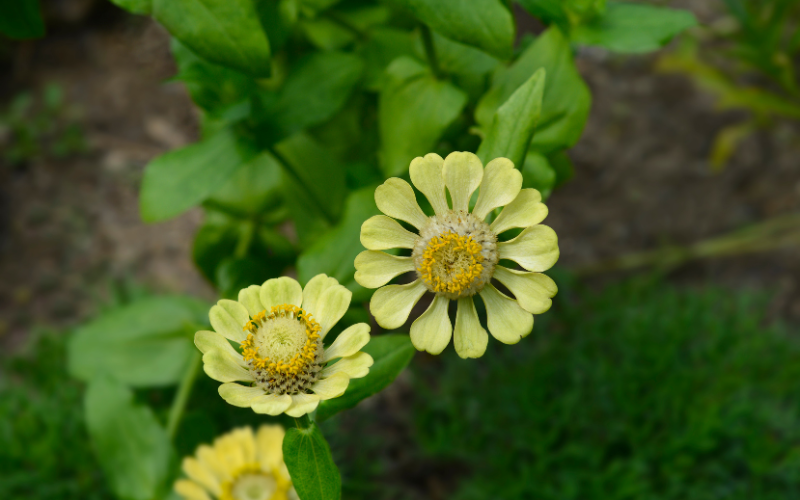
The Green Envy Zinnia is a dazzling member of the Zinnia family with brilliant and luring colors. Native to Mexico and Central America, is admired for its bright green and creamy tones. This plant thrives in well-drained soil and full sun exposure.
It blooms from mid-summer to autumn and can reach a height of up to 24 inches. Green Envy Zinnia is sure to captivate with its unique color and amazing looks, if used as the centerpiece or mixed with other flowers, its fascinating look is enough to lighten up any space.
| Scientific Name | Zinnia elegans ‘Green Envy’ |
| Native Range | Mexico |
| Flowering Season | Summer to fall |
Giant Allium
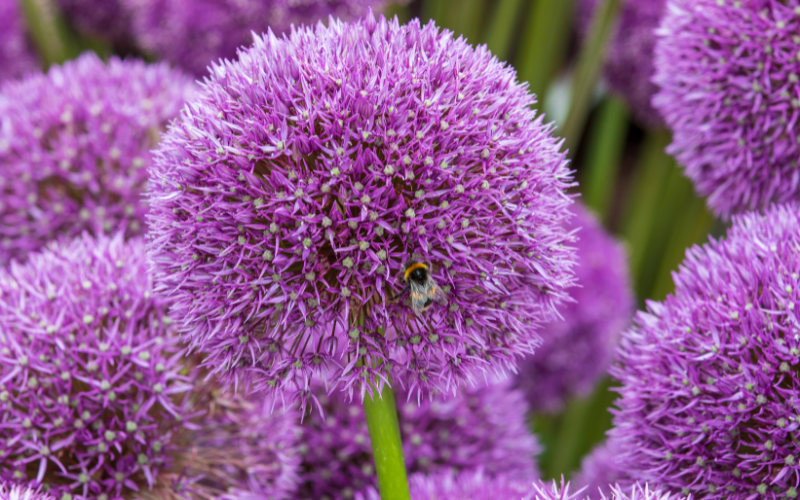
The Giant Allium, or Allium giganteum, is a stunning flower of the Alliaceae onion family. This flower is native to Central Asia and comes in a range of colors, including purple, pink, white, and even yellow.
This flower grows well in well-drained soil, blooms in late spring or early summer, and can reach a height of 3 feet. Giant Allium’s long, thin stems are topped with huge, globe-like flower heads made up of clusters of star-shaped blooms, giving a fantasy and dreamy feeling.
| Scientific Name | Allium giganteum |
| Native Range | Asia |
| Flowering Season | Spring to summer |
Golden Pea
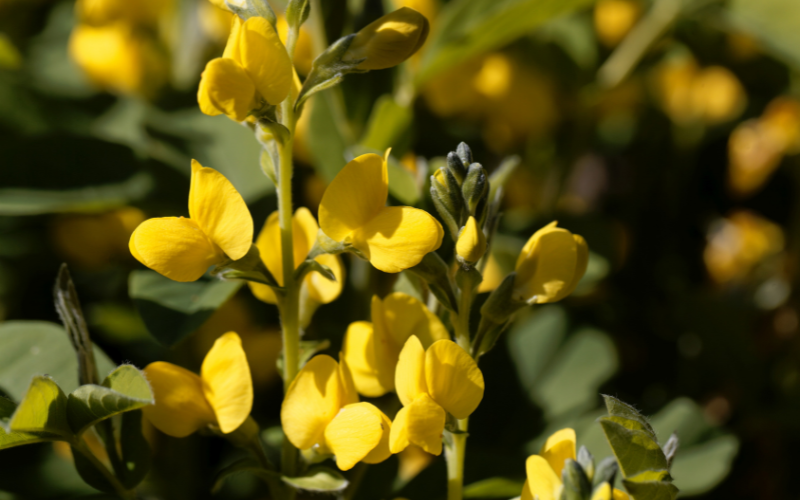
The Golden Pea, or Thermopsis rhombifolia, is a beautiful flowering plant in the legume family. Native to western North America, this plant is known for its vibrant colors, with vivid yellow blossoms that seem like delicate golden peas.
This flower blooms in late spring to early summer and grows to a height of 3 feet in well-drained soils. The golden pea is a visually lovely and charming flower that adds to the natural beauty of any place.
| Scientific Name | Thermopsis |
| Native Range | Asia and North America |
| Flowering Season | Summer |
Gladiolus

Gladiolus, also known as Gladiolus spp., is a member of the Iridaceae family. This beautiful flower is native to South Africa and comes in a variety of colors, including white and pink to red, purple, yellow, and even multicolored blossoms.
These thrive in warm, tropical climates and bloom in the late spring and summer months, growing up to 6 feet tall. Gladiolus flowers give a sense of elegance to any garden or floral arrangement with their graceful rising stalks decorated with many blossoms.
| Scientific Name | Gladiolus spp. |
| Native Range | Africa, Asia, & Europe |
| Flowering Season | Spring to fall |
Gaura

Gaura, scientifically known as Gaura lindheimeri, is a beautiful plant in the Onagraceae family. It is native to North America and comes in a variety of colors ranging from white and pink to red and purple.
Gaura grows best in well-drained soil, blooms from late spring to early autumn, and can reach a height of 2 to 4 feet. Gaura’s thin, oval-shaped leaves and bright, butterfly-like blooms set it apart in any garden, giving a touch of grace and joy to the surroundings.
| Scientific Name | Gaura lindheimeri |
| Native Range | Southern United States |
| Flowering Season | Summer to fall |
Gypsophila
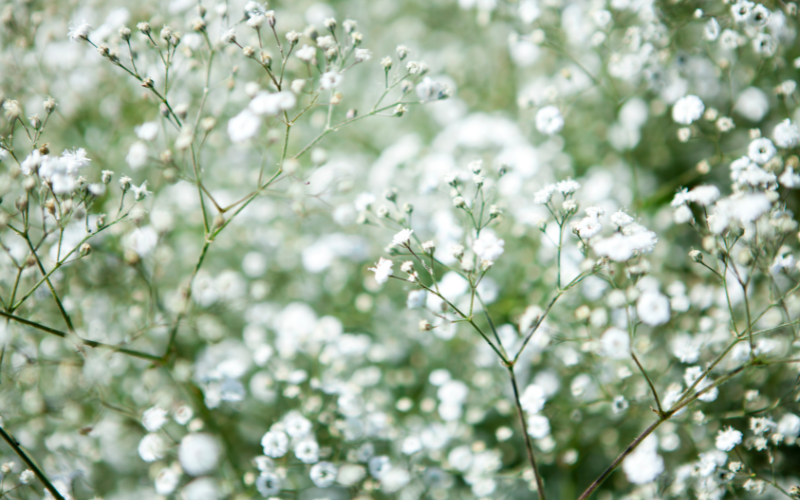
Gypsophila is a lovely flower. It is commonly known as Baby’s Breath. It is native to Europe, Asia, and some parts of North Africa. Gypsophila flowers are small, with individual blooms typically measuring around 1/4 to 1/2 inch (0.6 to 1.3 cm) in diameter.
Gypsophila typically blooms during the summer months. It is well-suited to well-drained soil and full sun exposure.
| Scientific Name | Gypsophila paniculata |
| Native Range | Eurasia, Africa, Australia, and the Pacific Islands |
| Flowering Season | Early summer |
Greenhood Orchid
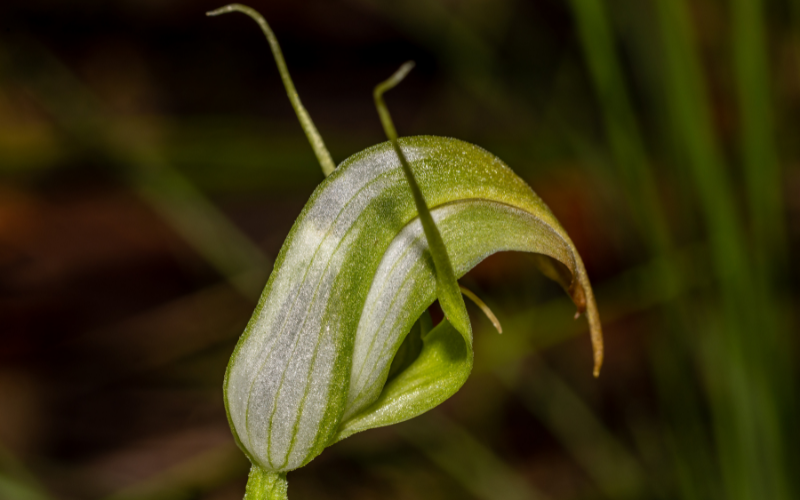
The greenhood orchid is a beautiful flower. It is also known as Pterostylis. It is native to Australia, New Zealand, and parts of Asia. The flowers come in shades of green, brown, white, or yellow.
Some bloom in spring, while others may flower in summer or autumn. They are adapted to different environmental conditions, so care must be tailored to the specific species being grown.
| Scientific Name | Pterostylis |
| Native Range | Australia and New Zealand |
| Flowering Season | Spring and Summer |
Green Milkweed
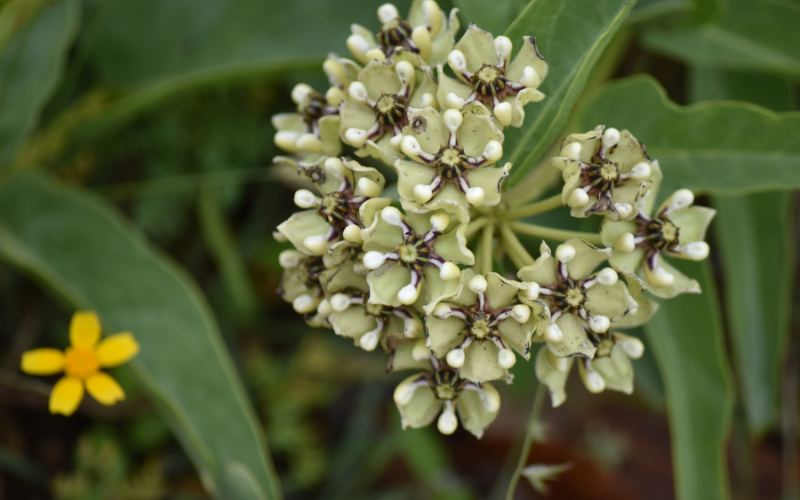
The Green Milkweed is a mesmerizing flower. It is scientifically known as Asclepias viridiflora. It is native to the United States. The flowers of Green Milkweed can vary in color but are typically greenish-white, pale green, or white with green accents.
The flowers are relatively small, with each flower typically measuring around 1/4 to 1/2 inch (0.6 to 1.3 cm) in diameter. It is typically blooms during the summer months.
| Scientific Name | Asclepias |
| Native Range | North America |
| Flowering Season | Late Spring to MidSummer |
Green Bells of Ireland
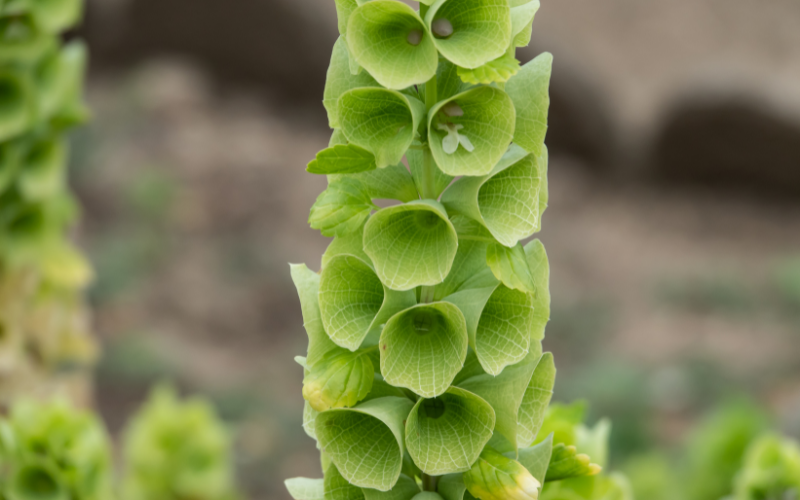
Green Bells of Ireland is a lovely flower. It is scientifically known as Moluccella laevis. It is native to western Asia. The flower spikes can grow to be quite tall, often reaching heights of 2 to 3 feet (about 60 to 90 cm) or even taller.
It typically blooms in late spring to early summer, producing its distinctive green flowers and bracts. It is easy to grow and prefers full sun to partial shade.
| Scientific Name | Moluccella laevis |
| Native Range | Turkey, Syria, and the Caucasus |
| Flowering Season | Midsummer to fall |
Greek Anemone
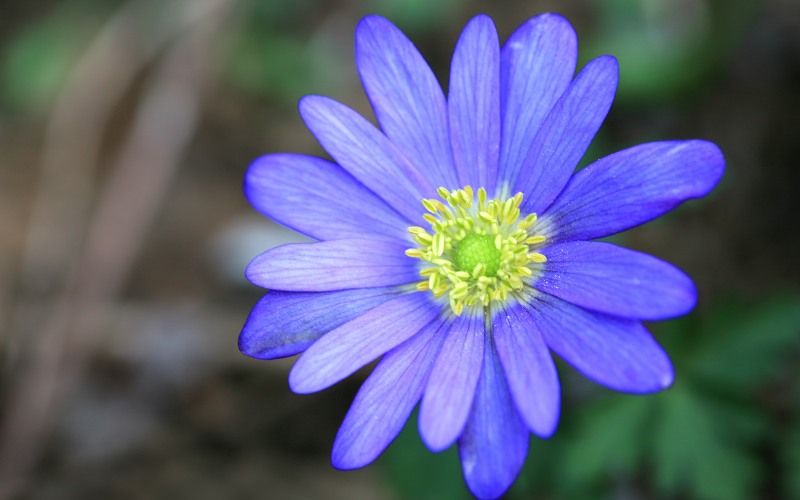
Greek Anemone is a charming flower. It is scientifically known as Anemone blanda. It is native to parts of southeastern Europe and western Asia. The flowers come in various shades, including blue, purple, pink, and white.
Greek Anemone typically measures around 1 to 2 inches (2.5 to 5 cm) in diameter. It is typically blooms in early to mid-spring.
| Scientific Name | Anemone blanda |
| Native Range | Southeastern Europe |
| Flowering Season | Spring |
Greater Periwinkle
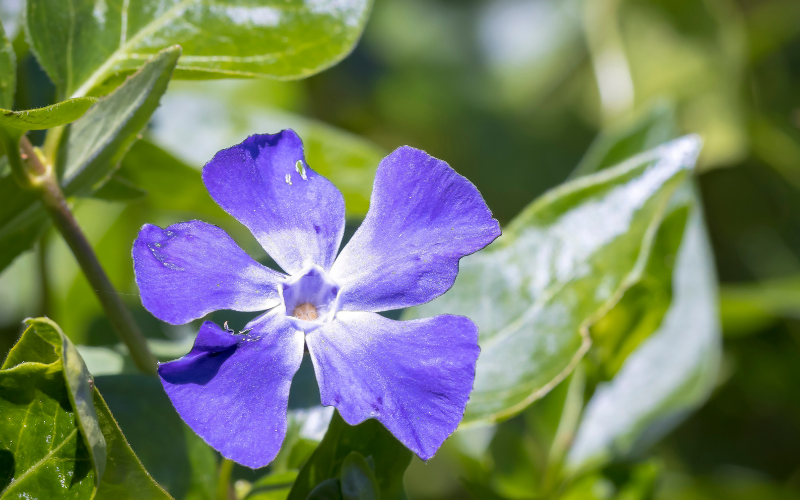
The Greater Periwinkle is a beautiful flower. It is scientifically known as Vinca Major. It is native to southern Europe and North Africa. The flowers are relatively small, typically measuring around 1 to 2 inches (2.5 to 5 cm) in diameter.
Greater Periwinkle typically blooms from late winter to early spring. It thrives in a variety of habitats, including woodlands, forests, and shaded areas.
| Scientific Name | Vinca major |
| Native Range | Europe and western Asia |
| Flowering Season | Spring to Autumn |
Great St. John’s Wort
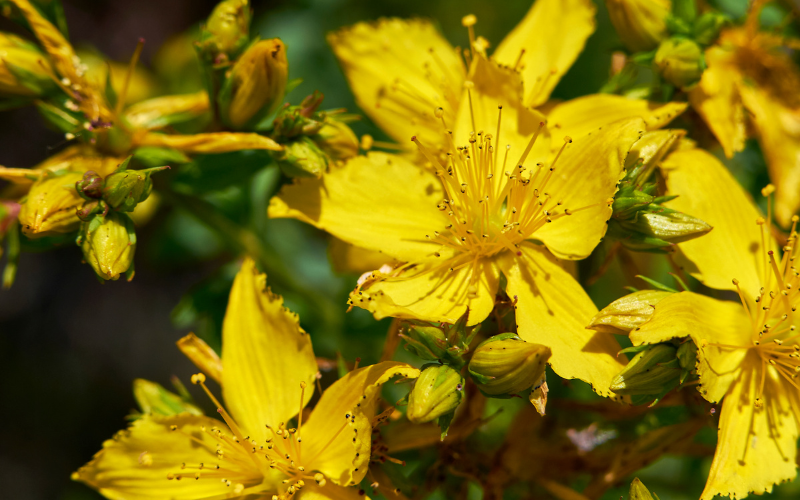
Great St. John’s Wort is a gorgeous flower. It is scientifically known as Hypericum calycinum. It is native to parts of southeastern Europe and Asia Minor. The flowers are typically a vibrant yellow color.
It is typically measuring around 1 to 2 inches (2.5 to 5 cm) in diameter. Great St. John’s Wort typically blooms in early to mid-summer. It prefers full sun to partial shade and can adapt to different light conditions.
| Scientific Name | Hypericum ascyron |
| Native Range | United States |
| Flowering Season | Summer |
Great Camas

Great Camas is a beautiful flower. It is scientifically known as Camassia leichtlinii or Camassia quamash ssp. It is native to North America. The flowers come in various shades of blue.
The flower is generally around 1 to 2 inches (2.5 to 5 cm) across. It is typically blooms in late spring to early summer. Great Camas thrive in moist to wet soil conditions and are often found in areas with seasonal or year-round moisture.
| Scientific Name | Camassia leichtlinii |
| Native Range | Western North America |
| Flowering Season | Late Spring to Early Summer |
Great Blue Lobelia
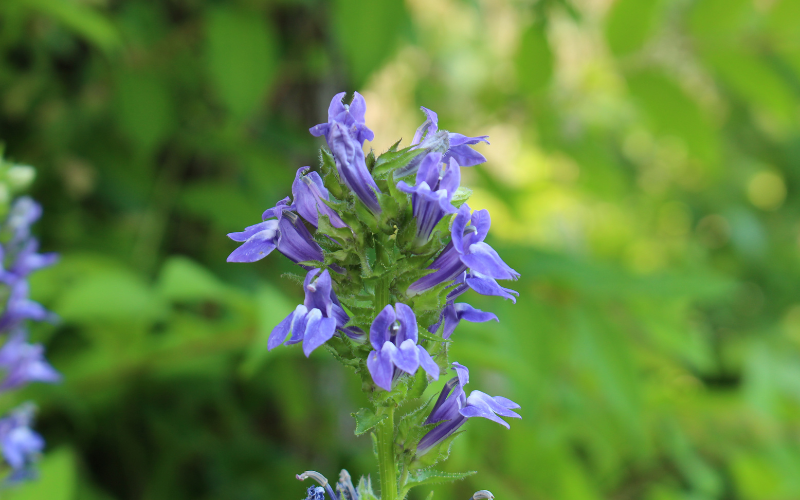
The Great Blue Lobelia is a stunning flower. It is scientifically known as Lobelia siphilitica. It is native to eastern North America. Great Blue Lobelia flowers are relatively small, typically measuring around 1 to 1.5 inches (2.5 to 3.8 cm) in length.
It typically blooms in late summer or early fall. It can tolerate partial shade but will also grow in full sun if enough moisture is available.
| Scientific Name | Lobelia siphilitica |
| Native Range | North America |
| Flowering Season | Late Summer to Early Fall |
Goldfinger
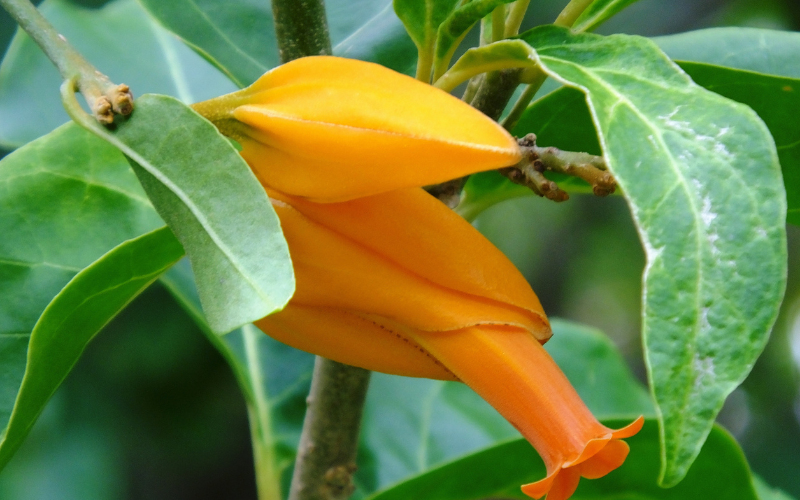
Goldfinger fruticosa is a beautiful flower. It is scientifically known as Potentilla fruticosa. It is native to North America, Europe, and Asia. The flowers are typically bright yellow, though cultivars have white, pink, or orange flowers.
The flowers typically bloom from late spring to early summer. It thrives in full sun or partial shade. It prefers well-drained soil.
| Scientific Name | Potentilla fruticosa |
| Native Range | New Zealand |
| Flowering Season | Late Spring to the First Frosts |
Question & Answer
What is the thickest flower?
The flower known for its thickness is the Rafflesia arnoldii.
Is gram-positive bacteria harmful?
Gram-positive bacteria can be both harmful and beneficial, depending on the specific species and context.
What do flowers attract?
Flowers attract a variety of organisms, primarily for the purpose of pollination. Pollinators, such as bees, butterflies, birds, bats, and insects, are attracted to flowers by various visual, olfactory (scent), and tactile cues.
What is the monster flower?
Rafflesia arnoldii is the world’s largest single flower, often referred to as a “Monster Flower” due to its enormous size and unusual appearance.
Which flower is called Queen of the Night?
The flower that is commonly referred to as the “Queen of the Night” is the Night-blooming Cereus (Selenicereus grandiflorus).
